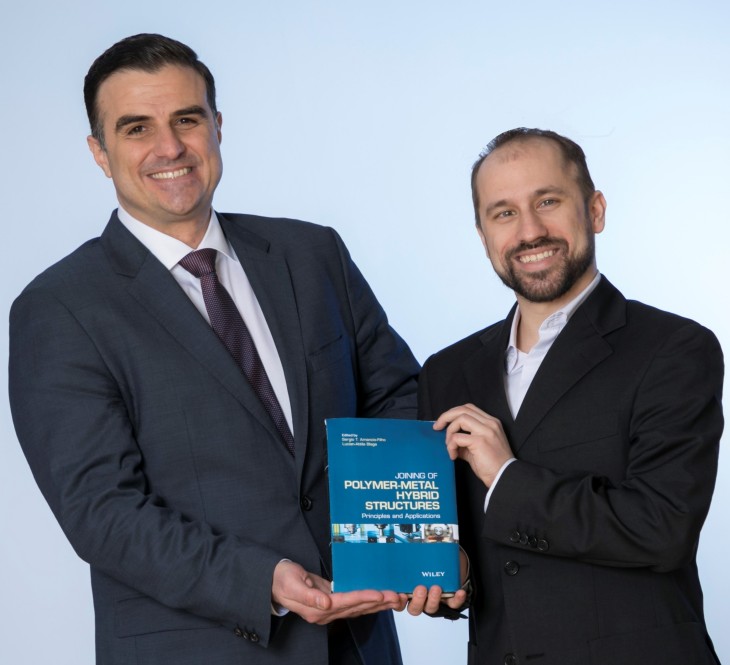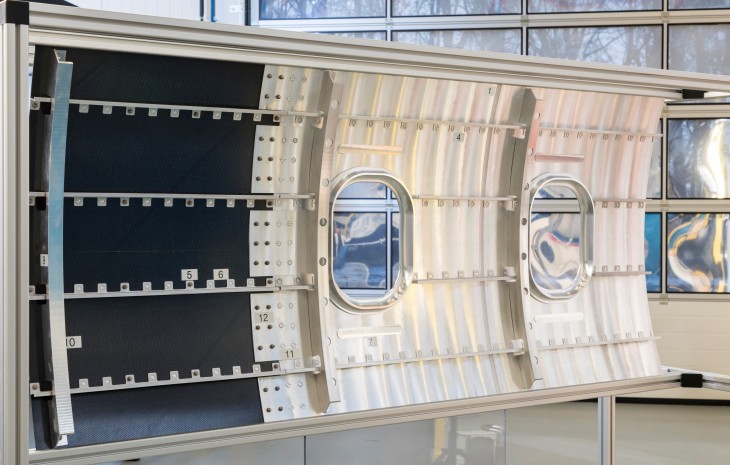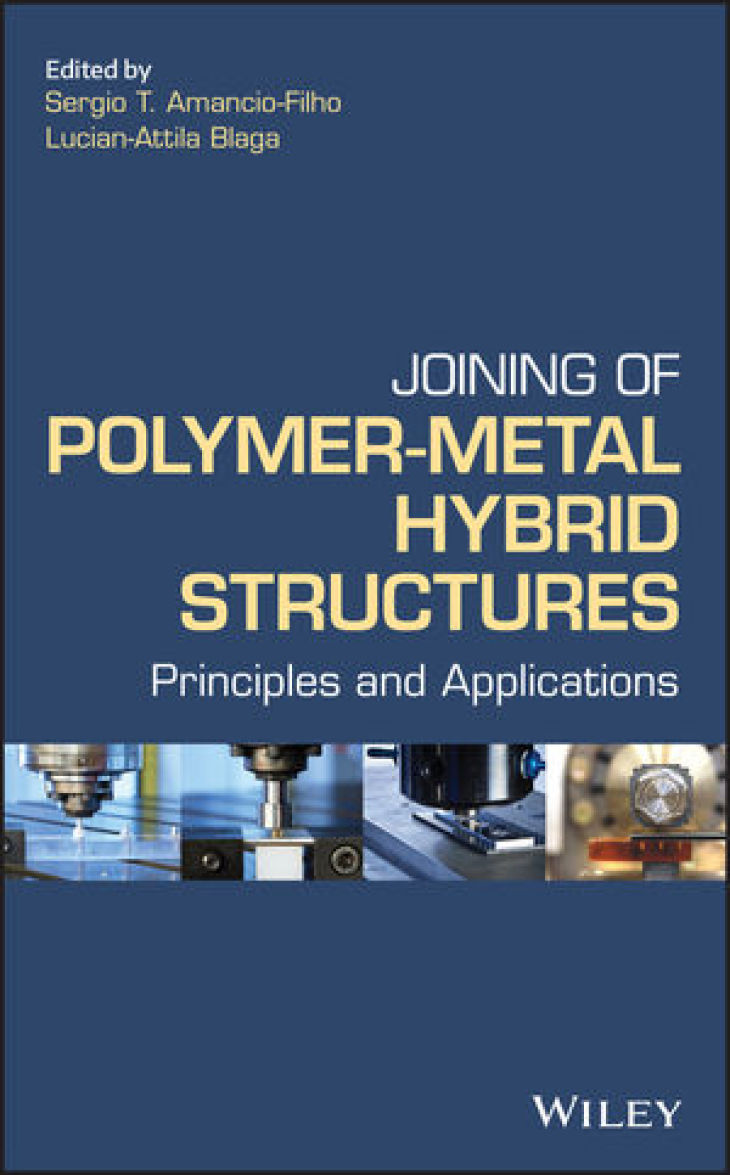For the first time in summarized form: New HZG compendium on advances in joining methods
Scientists at the Helmholtz-Zentrum Geesthacht (HZG) are publishing a new textbook on modern metal-plastic hybrid structure joining methods. The work is published by specialist publishing house Wiley and is aimed at students as well as professionals in the engineering sciences.

Prof Sergio T. Amancio-Filho (left) and Dr Lucian-Attila Blaga [Photo: HZG / Rasmus Lippels]
Passenger seats made of aluminium, railings made of plastic and struts made of carbon: the most disparate of materials are combined together in modern aerospace and automotive engineering. Joining these hybrid structures so that they are tear-resistant and therefore secure requires experience as well as precise expertise. In addition to conventional joining processes, such as using adhesive techniques, welding or the use of screws, other sophisticated methods exist today. It has so far required a great deal of effort to identify the benefits and drawbacks of these various methods.
This has changed with the publication of the new book: Prof Sergio T. Amancio-Filho and Dr Lucian-Attila Blaga comprehensively describe the scientific basis and technological properties of the different technologies for the first time. Both material researchers investigate specific joining methods at the Helmholtz-Zentrum Geesthacht. Fügeverfahren wie Kleben, Schweißen oder Schrauben existieren heute fortschrittliche Methoden.

Various solid-phase joining methods are demonstrated on a model of an aircraft fuselage. [Photo: HZG / Rasmus Lippels]
“We summarize all joining methods together with other joining experts from all over the world,” explains Prof Amancio-Filho. “In addition to conventional methods, such as adhesive techniques and using screws, we address solid state joining methods developed at the Helmholtz-Zentrum in five chapters.” What is special about the HZG techniques is that metals and plastics are bound together by stirring.
The metallic material is plasticised by using a tool that rotates and applies pressure, making the material doughy, whereby the plastic is partially fused or softened. These various materials are thus anchored to each other mechanically and physically, forming a joint that is exceptionally strong without the need for adhesives or rivets.
Technologies comprehensively described for the first time
In thirteen chapters, the book deals with scientific properties, including structural, physical, chemical and metallurgical and/or polymer phenomena as well as technical properties, such as mechanical performance, design or application of the different methods. The theoretical descriptions are supplemented by applied examples from industry and research.
Target Group: Higher Education and the Industrial Sector

[Picture: Wiley-Verlag]
The book’s target group consists of engineers in automotive and aerospace engineering and in the construction industry. Furthermore, it is also oriented toward students in the fields of mechanical engineering, chemical engineering, materials sciences, aerospace and automotive engineering. The authors also bear in mind the regional industry: “Numerous manufacturers in the fields of aerospace engineering and ship building as well as their associated suppliers are located in the Hamburg metropolitan region. We’re already collaborating with some firms. Their research departments especially will benefit from the expertise collected in the book," says Dr Blaga with certainty.
Approximately twenty authors from Japan, North and South America, Europe and Asia have contributed their expertise to the new book Joining of Polymer-Metal Hybrid Structures: Principles and Applications. Prof Sergio T. Amancio-Filho and Dr Lucian-Attila Blaga are the editors.
Online edition of "Polymer-Metal Hybrid Structures"
Joining of Polymer-Metal Hybrid Structures: Principles and Applications:
Sergio T. Amancio-Filho und Lucian-Attila Blaga.
DOI: 10.1002/9781119429807
Print ISBN: 9781118177631
Online ISBN: 9781119429807
Kontakt:
Advanced Polymer-Metall Hybrid Structures Group
Phone: +49 (0)4152 87- 2066
E-mail contactInstitute of Materials Research
Helmholtz-Zentrum Geesthacht
Starting March 1st, 2018, Prof Amancio will become endowed professor of “Innovative Materials and Aerospace Production Technology” at the Institute for Materials, Welding and Forming (IMAT) at the Technical University Graz in Austria.
Email: sergio.amancio@tugraz.at
Advanced Polymer-Metall Hybrid Structures Group
Phone: +49 (0)4152 87-2055
E-mail contactInstitute of Materials Research
Helmholtz-Zentrum Geesthacht
